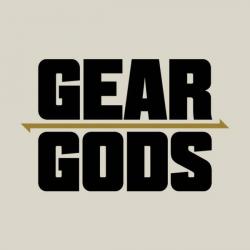
Music memorabilia is a rather unique sector in entertainment, both due to the incredible sums of money that can be thrown around and how it’s inspired what are almost tiers to memorabilia items. Akin to sports memorabilia, but to a less accessible degree, fans and collectors love to pursue gear used by artists, gear signed by artists, and gear that’s been made in an official collaboration with a popular artist.
Of course, the most valuable of these tiers is the gear used by the artists, such as the Stratocaster guitar used by Jimi Hendrix and purchased for $2 million. Autographed gear is next, with signed memorabilia long being coveted by fans. Finally, for those who want to get a personalized bit of gear but without the massive prices of the other two tiers, there is collaborative or signature gear.
Limited in release, but usually in more quantities than the one-off Hydra monstrosity from IBANEZ for Steve Vai that we covered here on Gear Gods, these models have produced a tremendous amount of hype over the years, but how do such collaborations work for the businesses, and is it worth it for the fans?
Collaborative gear’s a smooth move for businesses
To understand the benefits of collaborative gear in the music industry, it’s best to look at the popular practice of celebrity advertising. Celebrities in adverts, celebrity endorsements, and celebrity brand ambassadors are tried-and-trusted methods of enhancing brand attractiveness and bringing more attention to the label. As laid out by this Latana exploration of the practice, getting this kind of celebrity association leads to brand attention, higher sales, and positive image transfer. It’s why George Clooney’s collaboration with the Nespresso brand was worth $40 million, as sales increased by 30 percent in just one year.
Collaborative gear takes the celebrity endorsement angle another step, allowing the star to personalize the end product. Nowadays, personalization is an essential part of the customer experience, with the Smart Insights dive explaining that personalization is crucial for marketing. People covet a unique and personalized experience as they feel more engaged, which can be seen with the live iterations for the Betway roulette offering. The value here comes from the personal experience of playing opposite a human croupier in real-time, replicating the atmosphere of playing at a brick-and-mortar venue and adapting it to a digital audience to get the best of both worlds.
You’ll even find fast food apps pandering to the desire of personalization, with the KFC app granting rewards and exclusive offers to those who buy food through the mobile app. Customers, now more than ever, covet personalization and value what it means to have a personalized experience. In turn, some gear that has been personalized in some way by a music idol greatly increases its perceived value. It may not be hand-signed or used by the artist, but the Fender Jimi Hendrix Stratocaster is still sold by the Reverb store for close to $1000.
Building the hype around collaborative gear
Building hype for collaborative gear isn’t overly difficult. Essentially, a brand simply needs to say that they’ve worked closely with a big name, perhaps get out a press release as to their involvement, and then state that the gear is in limited supply. This, as Psychology Today explains, is the phenomenon of FOMO (the fear of missing out), which is both a powerful marketing tool and directly affirms the value of items due to them being low in distribution. There have been many examples of this in music, with one of the more recent examples being the new Gibson collaboration with Dave Mustaine, the Flying V EXP, which is available for $2,799 and can be seen here on Gear Gods. This release widened the original collaborative gear runs but still fetches a high price.
Of course, there have been many more stars of rock and metal who have lent their design ideas and creativity to a major brand’s new line. The Fender release of Jazzmaster, in its polar white satin finish, was a signature piece that’s said to channel the crushing tone of Slipknot guitarist and collaborator Jim Root. The ESP range features several signature series of collaborations, from Alan Ashby to Will Adler. However, perhaps the most eye-catching is the Snakebyte line, particularly the SE Baritone signature model, from James Hetfield that we looked at on Gear Gods. There are even limited runs of the already limited runs of signature guitars. In November 2020, Avenged Sevenfold’s Synyster Gates got a Dark Night version of the Schecter model, per Guitar World.
If you’re to use signature gear and aren’t collecting for the sake of value or memorabilia, the artist behind the collaboration shouldn’t really factor. This is because, at the end of the day, it’s still just a bit of gear, and regardless of the name behind the series, it needs to suit your needs and specifications. If it doesn’t, it likely won’t warrant the inflated price. On the other hand, as a fan or collector of a certain artist, collaborative signature series models offer a more accessible way to get some memorabilia that may hold more value to you than the baseline releases from brands.
Gear Gods occasionally accepts paid content. For more, view our advertising policy.






